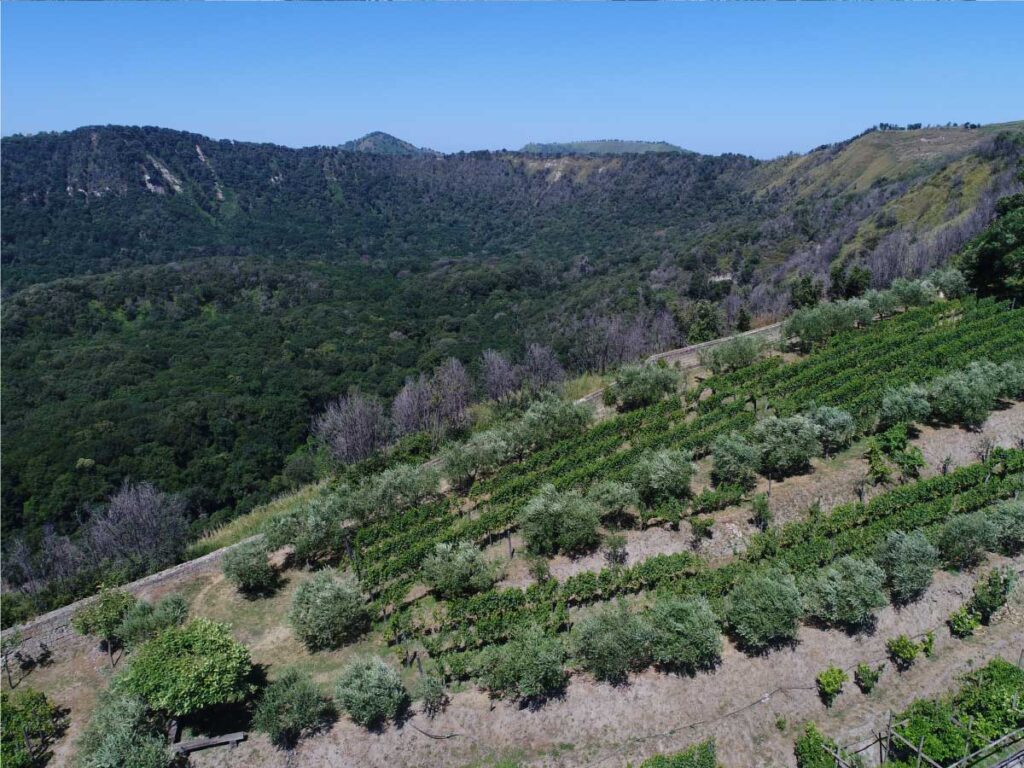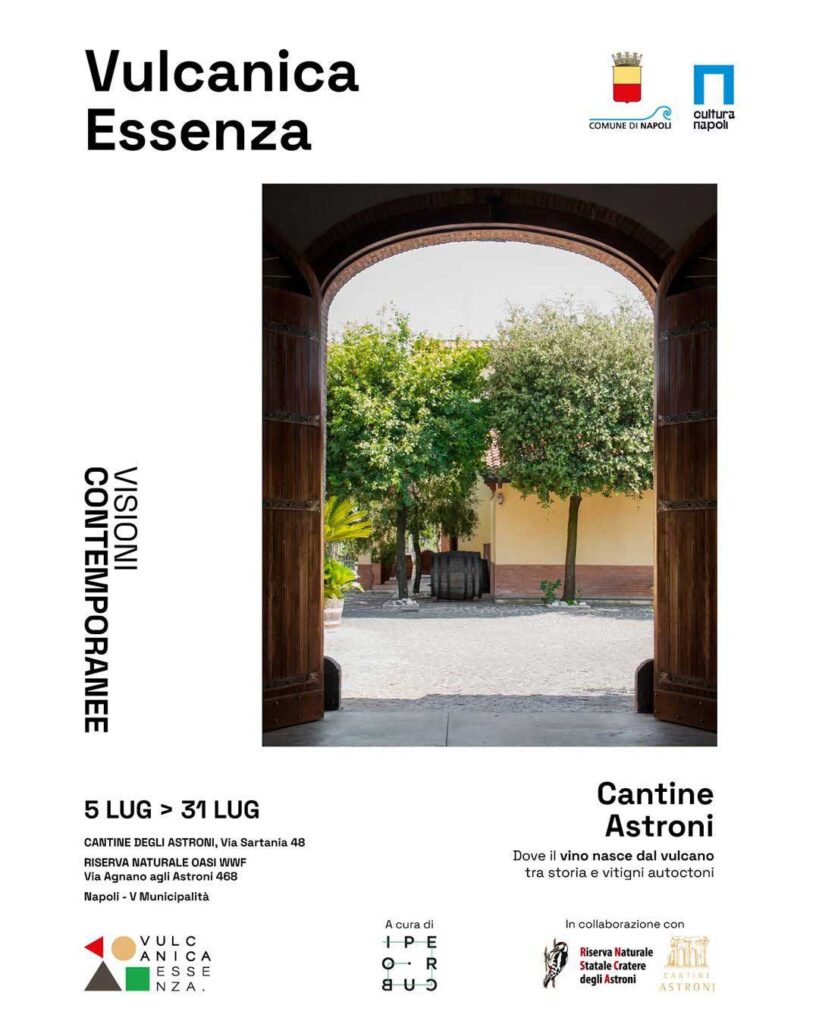Vigna Astroni
CAMPI FLEGREI DOP FALANGHINA – CRU

Vigna Astroni, the cru of Falanghina of Campi Flegrei Cru, was born from our vineyard, which grows on the outer slopes of the Astroni Crater.
The grapes come from a single terraced vineyard of 1.5 hectares.
The wine is bottled after 8 months of aging in stainless steel tanks without refrigeration and gentle filtration. The wine may contain some sediments on the bottom of the bottle.
Technical product sheet
Grape variety | Falanghina 100%
Production area | Outer slopes of the Astroni Crater. Exposure east to southeast, 170-21 6m a.s.l.
Coordinates | 40°50’52″N 14°09’35″E
Soil | The soils have a volcanic origin and a pyroclastic form , certainly linked to the Phlegrean eruptions between 3500 – 5000 years ago, and are defined by a layered subacid or neutral reaction lithological structure , with a major quantity of potassium, phosphorus, calcium oxide, and also reduced carbonates.
Training system | Guyot
Yield | 50 quintals
Harvest period | October
Harvest | manual
Winemaking
Technical prefermentation | the grapes are harvested by hand and delivered to the winery in small crates. They are destemmed, slightly crushed, and left in pneumatic soft presses where the skins and juice macerate for a few hours.
Fermentation | only the free run must is used and fermented in stainless steel. The first part of the fermentation process is triggered by the work of indigenous yeasts, but later inoculated yeasts neutral.
Fermentation temperature | 14° – 18° C
Refining | after alcoholic fermentation, the wine is racked and refined on the lees for at least 6-8 months
Alcohol content | 12,5%
Organoleptic characteristics
A deep straw yellow color. Mineral notes combine with elegant toasted sweet almond and light herbaceous scents.
Sapidity is the first impact noted during tasting which is then followed by a lively acidity.
These components interact well with the smoothness of the wine

The Astroni’s vineyard is located close to the homonymous crater, on the border with the eighteenth-century Bourbon boundary wall erected by Charles of Bourbon in defense of his personal hunting reserve, today a natural oasis managed by the WWF.
The vineyard covers about 1.5 hectares at an altitude of about 200 meters above sea level.
With topographic reference of 40°50’52” N latitude, 14°09’35” E longitude, it is entirely distributed in the municipality of Naples and is located on the east – south-east side of the crater.
The vineyard is divided into several terraces, on which there are mainly Falanghina vines with a small presence of Piedirosso grape vines.
The vineyard has an average age of thirty years, is ungrafted and is arranged in espalier with guyot architecture. The rows tend to be oriented north-south, with layouts of 1.80 m x 1 m and have a density of 4000 plants/hectare.
The soils have a volcanic origin and a pyroclastic form, certainly linked to the Phlegrean eruptions between 3500 – 5000 years ago, and are defined by a layered subacid or neutral reaction lithological structure, with a major quantity of potassium, phosphorus, calcium oxide, and also reduced carbonates.
From the grapes of the Astroni vineyard we produce our Falanghina single vineyard: Strione and Vigna Astroni.

The Falanghina probably derives from ancient Greek-Balkan stocks and seems to owe its name to its expanded habit, for which it was traditionally tied to support poles called “falanga”, from which Falanghina, or “vine supported by poles”.
The vine has medium-sized bunches, long and compact, cylindrical in shape and winged on one side. The grains are medium in size, spherical in shape with medium concentrations of bloom on the thick skins with gray colors with yellow reflections. It is quite vigorous, with average, constant yields and harvests starting from the third week of September.

